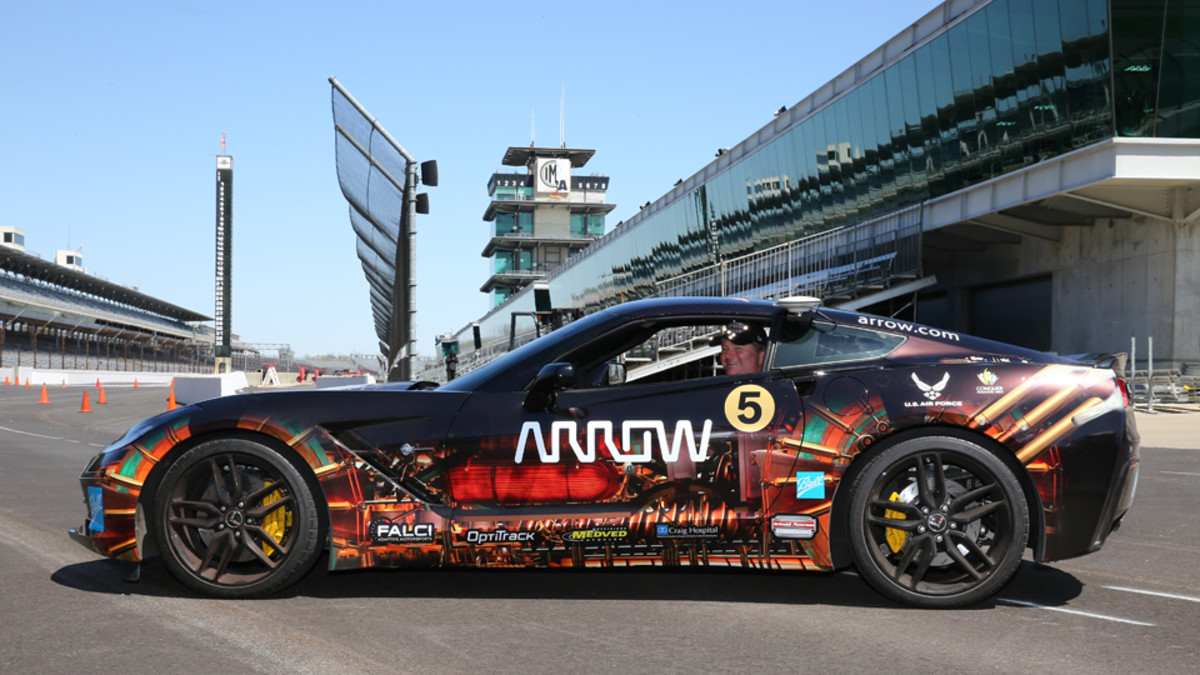
Head Start: The New SAM Car Allows Hands-Free Driving
Fourteen years ago, doctors told Sam Schmidt he'd never move his arms or legs again. They didn't say anything about driving.
Born from a joint venture between former Indy racing driver Sam Schmidt, Arrow Electronics and countless others, the SAM Project has made the idea of a semi-autonomous racecar a reality.
As a driver, Schmidt made 27 career starts in his career, winning at the Las Vegas Motor Speedway in 1999. But on January 6, 2000, Sam crashed during a practice lap at the Walt Disney World Speedway, severely damaging his spinal cord. He was diagnosed as a quadriplegic, seemingly dashing any hopes Schmidt had of ever racing at high speeds again.
In 2001, Sam started Schmidt Peterson Motorsports. In its short time in the racing game, the team has won more Indy Lights championships than any other. Despite being successful as a team owner in auto racing, being behind the wheel at speed was a feeling that couldn’t be replicated for Schmidt. Until, of course, he got a text message from a Dr. Scott Falci and a team of engineers he’d never met before.

Look under the hood of a modified 2014 Corvette C7 Stingray that has been built so a qualified quadriplegic driver can safely operate it under racetrack conditions.
SAM Project/Arrow
After their initial contact with Schmidt, engineers and medical researchers joined forces to work toward a common vision in June 2013—modifying a Corvette C7 Stingray to be safely driven at high speeds by head movements and other body movements that would be feasible for a quadriplegic race driver.
Schmidt Peterson Motor Sports then joined forces with the likes of Arrow Electronics, Ball Aerospace & Technology Corp., Craig Rehabilitation Hospital, Falci Adaptive Motorsports and the Air Force Research Laboratory with the understanding that collaboration would be key. They knew whatever technologies they developed would need to be integrated into one seamless system. They set out to transform what might be possible into something practical.

The driver wears a racing hat fitted with eight infrared sensors. Inside the car, four infrared cameras are mounted facing the driver. The cameras and sensors integrate into a system that can motion-track the driver’s subtle head movements in real time.
SAM Project/Arrow
The team in place had a question they needed to answer: How do you modify a car so it can be safely driven by someone who can’t move from his shoulders down? Previous cars modified for paraplegic or quadriplegic drivers have primarily used touchscreens or joysticks controlled by a driver’s hand. This project would take things to futuristic levels using sensors and complex algorithms to detect the driver’s movements and translate them into driving controls.
Initial tests by the team showed that their system worked, but it had encountered some problems near sunrise and sunset. At those times of day, the sun was low over the horizon and caused interference with the infrared cameras. Tinting the windows blocked enough light for the system to perform in any conditions.

The driver steers the car by tilting his head to the left or right. The processor translates the camera and sensor data to a rotary actuator on the steering wheel.
SAM Project/Arrow
Developing the infrared camera system was only the first step in getting the car to function properly. The next step was translating that sensory data into actual car-controlling movements. According to the team’s website, they were able to engineer “a central processor that interprets the camera information and controls rotary actuators attached to the gas pedal, brake pedal and steering wheel.”
On May 18, 2014, Sam drove for the first time in 14 years. He completed a lap—reaching a top speed of 97 mph—at the iconic Indianapolis Motor Speedway in front of thousands of spectators and a television audience in the millions.

An on-board GPS creates virtual boundaries that if reached, will warn the driver and can correct course if needed. The GPS updates 100 times per second to provide the necessary level of precision for speed and location.
SAM Project/Arrow
As detailed by the SAM project team, this isn’t just about being able to race:
“Driving is about more than getting from point A to point B. It’s about freedom. The SAM vehicle is designed to restore independence, control and a sense of accomplishment to a qualified disabled driver despite the physical limitations imposed by injury. This technology breaks down barriers and opens new physical and emotional horizons, allowing all of us to be the drivers of our own lives.”
WATCH: Arrow Electronics and Sam Schmidt Team Up For the SAM Project
Ed — This is a continuation of an article on the SAM car that appeared in the June 2 issue of Sports Illustrated. Information in this article was taken from the team’s website, arrowsamcar.com, detailing the project.




